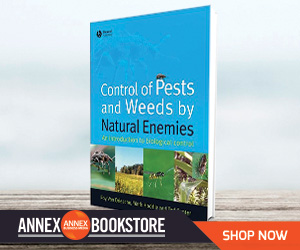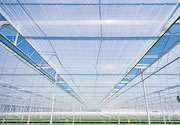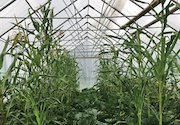| |
| |
 |
 |
| |
 |
|
@{mv_date_MMM d, yyyy}@ |
|
| |
 Being considered an essential service helped to keep the doors open for many farms and businesses, but not all recovered their losses.
» Read more...
Being considered an essential service helped to keep the doors open for many farms and businesses, but not all recovered their losses.
» Read more...
The pandemic was undoubtedly the single biggest shock to the Canadian agriculture industry in 2020, and its impact will have some lasting effects.
» Read more...
Recognizing the scarcity of COVID testing in certain countries, Transport Canada has announced exceptions to the 72-hour rule.
» Read more...
|
| |
|
| |

Biological control – utilizing a population of natural enemies to seasonally or permanently suppress pests – is not a new concept. The cottony cushion scale, which nearly destroyed the citrus industry of California, was controlled by an introduced predatory insect in the 1880s. Accelerated invasions by insects and spread of weedy non-native plants in the last century have increased the need for the use of biological control. Use of carefully chosen natural enemies has become a major tool for the protection of natural ecosystems, biodiversity and agricultural and urban environments.
>> Learn more |
| |
|
| |
 Accumulating dust, dirt and sometimes algae, energy screens are often left unchanged for far too long. How can you best maintain this investment, and when are you due for a new set? For best use practices, double screening advice and shopping tips, read on.
» Learn more
Accumulating dust, dirt and sometimes algae, energy screens are often left unchanged for far too long. How can you best maintain this investment, and when are you due for a new set? For best use practices, double screening advice and shopping tips, read on.
» Learn more |
| |
 Growing nearly anything in the Yukon brings its own set of challenges, but the effect of climate change on traditional food sources in northern communities has heightened their interest in developing capacity for local food production. Seeing the potential for food scarcity was a key reason the elders of the Tr’ondëk Hwëch’in (TH) First Nation began the TH Teaching and Working Farm in 2014
» Learn more
Growing nearly anything in the Yukon brings its own set of challenges, but the effect of climate change on traditional food sources in northern communities has heightened their interest in developing capacity for local food production. Seeing the potential for food scarcity was a key reason the elders of the Tr’ondëk Hwëch’in (TH) First Nation began the TH Teaching and Working Farm in 2014
» Learn more |
| |
|
| |
|
|
| |
| |






